Equatorial Guinea - It's hidden for tourists
There were various obstacles that made it difficult to get into this beautiful country. Geographically, the country is not far away but the bureaucracy and a small number of flight connections made it one of the most difficult countries to visit.
The country is "hiding" from tourists and that makes it very difficult to get there, or once there, to get around. While surrounding countries opened up for tourism, Equatorial Guinea is still far behind but the future will change a lot, for sure.
Not many people even know the country or even fewer know where it is. Well, it's just below Cameroon, but I'm sure not even many people know the country Cameroon. So that doesn't really help.
But the country consists of the mainland part and the unique island "Bioko", with most international flights going to this island. On the island is also the capital Malabo, the most important city.
In my case, I knew where it is, but my problem was definitely the visa. Getting a visa for Equatorial Guinea was a real struggle.
2. Getting a visa is a real challenge. How it worked
3. It requires a travel permit to move freely within the country.
4. Photo permit to take photos (its indicated on the permit what is allowed to take photos of).
5. It is expensive: especially the flights and accommodation.
Why was Equatorial Guinea so difficult to visit?
1. There are very few flights in and out of the country.2. Getting a visa is a real challenge. How it worked
3. It requires a travel permit to move freely within the country.
4. Photo permit to take photos (its indicated on the permit what is allowed to take photos of).
5. It is expensive: especially the flights and accommodation.
Initially, it looked like I will NOT be able to visit here at this time. I received the visa one day before departure (with a huge amount of effort) and the flights were postponed several times, too.
But despite all these difficulties, the country was worth the effort, because I rarely heard anything about Equatorial Guinea. So I was very glad that I made it here.
Day 1 - Arrival in Equatorial Guinea
The flight was supposed to go directly from Gabon to Malabo today, but CEIBA Airline changed the route at short notice to make a stopover in Sao Tome. The whole thing was delayed for several hours without a clue why.Immigration can take hours
All passengers were taken by bus from the aircraft to the terminal where they were taken directly to the immigration desk.Fortunately, I was one of the first to leave the bus and my assumption was confirmed: There was only one policeman who checked the passports of all non-Equatorial Guinea people and with 3 minutes per person, it takes hours I would be in the back of the queue.
I was surprised that the policeman only wanted to see my passport with the visa and nothing else. No questions, nothing.
The baggage claim and arrival hall are without a cover directly 2 meters behind the immigration desk. I wouldn't have thought that this would be so simple in a country that is trimmed to the highest level of security.
My plan for Equatorial Guinea (4 days)
I could get the visa only with the help of a local agency, which made the invitation letter.
Except for the agency RumboMalabo, I was not able to find an appropriate agency that did not make a completely overpriced impression for Visa service or traveling service within the country. Hector, the boss of the agency was waiting for me to pick me up, even though the airline was late for hours.
My first goal in the itinerary for Equatorial Guinea was "to arrive".
Tomorrow I will do a round trip around the island of Bioko and the day after tomorrow I will visit Malabo and the area around it.
Day 2 - Driving around Bioko (11 things to see)
I had my Airbnb in the Caracolas district.Caracolas is basically in the center of Malabo and restaurants and shops are just around the corner.
On Google Maps, the whole thing doesn't look so time-consuming, but the fact that the roads are very curvy and there are many police checkpoints makes it very lengthy. Going around Bioko definitely takes a lot of time!
Bioko Island is small on Google Maps, but not small in reality
A car with a driver was organized by RumboMalabo to take me around the island of Bioko counterclockwise.On Google Maps, the whole thing doesn't look so time-consuming, but the fact that the roads are very curvy and there are many police checkpoints makes it very lengthy. Going around Bioko definitely takes a lot of time!
The driver who brings me around the island
I was glad to be ready to start at 6am. Roberto the driver knew the island very well because he works for the military of Equatorial Guinea.He had a few week's vacations from military service and will be the driver today. He was a good driver and his job in the military was a perfect combination because at every checkpoint he either knew his colleagues or had it easy to explain who he is due to his military ID.
As soon as his identity card was spotted nobody was interested in the white tourist anymore.
A travel permit was mandatory to move around
But to get through the checkpoints I tourists a travel permit. How to get it, I have no idea.This is independent of the visa and had to be organized by the travel agency. Without this permit, it's very difficult to get through the different checkpoints on the whole island.
The road towards the south on "Basupu"
It was still a bit dark around this time and everything was still asleep. Occasionally there were a few people who came out of the houses half asleep.It's like a street through the jungle.
The street outside of Malabo soon became very green with thick bushes and tall trees left and right. There are very aggressive mosquitos or something like that all over the southern part of Bioko, with bites that are extremely itchy.
Driving down to Luba
It was a right turn along the street towards Luba, which led to the beach down here. It's called Arena Blanca.I will keep this place in memory as the nicest place around the trip of Bioko island. On the weekend it's a busy place for the locals of Malabo, who come down here to relax.
Arena Blanca Beach restaurants are stacked up with fish for the Christmas celebrations. The old man came with the canoe and a box of fish
The bay with the monument of "Count Arjelejos". This is the place where the Spaniards took over Equatorial Guinea back in 1778.
Arena Blanca Beach restaurants are stacked up with fish for the Christmas celebrations. The old man came with the canoe and a box of fish
The bay with the monument of "Count Arjelejos". This is the place where the Spaniards took over Equatorial Guinea back in 1778.
Rats and snakes for sale along the streets to Luba
It's not uncommon to see farmers and hunters walk along the street with a big bag. They usually had thick socks or boots as they were in the bush, hunting for big rats and snakes and other animals to eat.Well, that's normal food in Equatorial Guinea.
The particular examples below, a boa snake and a huge rat are being grilled with a flamethrower
The city "Luba"
It's a nice place in the west of the island and is the second largest town. Not many other opportunities for restaurants after Luba.So it was a perfect place for having a coffee, before continuing the way all the curvy roads up to Moca.
Market and streets in Luba around Christmas. It was still early in the morning that's why it seems so quiet.
Market and streets in Luba around Christmas. It was still early in the morning that's why it seems so quiet.
Driving up the mountain to "Moca"
Along the way around Bioko were about 7 police checkpoints on the whole trip.Each checkpoint was occupied by several policemen who did identity checks and travel/photo permit checks.
When these two parts were in order, it seemed they decided based on mood (or the size of the bribe) if someone can pass or not. I was lucky as the driver had his soldier ID and by showing it to the police, they aborted the checks and let us continue.
So green streets beside the roads to Moca (which is at an elevation of 1400 meters).
When these two parts were in order, it seemed they decided based on mood (or the size of the bribe) if someone can pass or not. I was lucky as the driver had his soldier ID and by showing it to the police, they aborted the checks and let us continue.
So green streets beside the roads to Moca (which is at an elevation of 1400 meters).
I've been told up until a few months ago, the streets were just made of dirt and mud up to Moca and that it requires 4x4 cars up there. But as of today, the streets are fully renovated and in perfect condition.
Are they maybe preparing for tourism?
Moca is the president's weekend location and he has many houses here, because it's cold up here.
Are they maybe preparing for tourism?
Moca is the president's weekend location and he has many houses here, because it's cold up here.
The village is located high above sea level and the president has even a big residence with two helipads.
Strange to watch the locals living in huts and with the most basic infrastructure, but the president lives just behind the bush in big palaces. Well, the streets are good though, but I assume they are only having a high standard because the president is using them too.
I thought there would be some restaurants up there to have lunch but there are no restaurants except one, which is owned by the president.
The restaurant was huge but completely empty and I thought its worth having a look but when seeing the prices on the menu, I preferred to have lunch later in the fishing village "Riaba".
The church in Moca "Iglesia de Moca"
It's a very quiet village. Not many people were walking around. The ones who were walking around looked surprised to see a car driving around.I assume the reason for them being surprised was the fact that the roads are still new here and therefore not many cars passing by so far.
Green mountains between "Moca" and "Riaba"
The next stop was the fishing village Riaba which was about 30 minutes from Moca, driving all down the mountain again.It's so green and seems totally untouched here. Again many hunters walking at the edges of the forests looking for rats and snakes.
On the way down to Riaba, the driver saw one of the hunters with a fresh catch in a bag walking down the road and bought one of the big rats for his family Christmas dinner.
The fishing town " Riaba"
Riaba was the next village and it's right at the beach to the big ocean.Every village in Bioko is very calm and quiet. There are no big buildings or modern infrastructure, but all is kept very basic and the colonial architecture is still visible everywhere.
There are a few restaurants for visitors as this is a place like Luba. A small hub for locals who come here for the weekends.
The restaurant had the menu written on the blackboard and the only thing I understood was "Boa" at the top of the list.
There are a few restaurants for visitors as this is a place like Luba. A small hub for locals who come here for the weekends.
The restaurant had the menu written on the blackboard and the only thing I understood was "Boa" at the top of the list.
So a boa for lunch?
Or maybe better having a rat?
When seeing the boa on the menu I wasn't very surprised to see one of the other meals on the list would be a rat. Although I was happy they also served normal fish from the grill with plain white rice.
Passing the "Puente Cope bridge"
On the right side of Bioko, the road passes two huge bridges over the jungle forest.The bigger of the two bridges was the Puente Bridge.
The other bridge is a bit smaller but the view still impressive. Back to Malabo there are many houses beside the road.
There were also parts of villages that had completely finished big nice houses, but empty.
The other bridge is a bit smaller but the view still impressive. Back to Malabo there are many houses beside the road.
Invisible villages when driving back to Malabo
There are not that many houses visible when driving along the road. On several occasions, the road separates and when following one of these roads, after a few meters full-scale villages show up with a busy village life going on.There were also parts of villages that had completely finished big nice houses, but empty.
I have been told they were built by the president but no one can afford to live in there.
Back to Malabo in the late afternoon
The whole Bioko loop takes a lot of time.Even when not spending much time at each site, the whole loop is time-consuming. There are many more spots that would be interesting to visit or simply to watch the people doing their daily business, but I run out of time today.
The sun already was settling and I was fine to get back to Malabo city.
The sun already was settling and I was fine to get back to Malabo city.
Day 3 – Christmas in Malabo (7 things to see in Malabo)
Today is Christmas Eve, December 24th. It's quiet in Malabo.I had the whole day today to see the city of Malabo, the national park, the old town and the Sippopo area.
1. Visiting the Malabo National Park
I wanted to see the park earlier in the morning because there are almost no shades in the park. And as the park is huge, it took me a while to get around.The entrance gate. It's open from 9am and costs CFA 500.
The "Plaza de Africa" and "Fuente Musical". When I go visit such parks in other countries I quickly felt bored.
But this park had something unique, very different than other parks. Maybe because it is in such a remote country like Equatorial Guinea?
Originally I planned to drive around the park with a bicycle which is available for rent inside the park.
But as it was Christmas today, the bike rental was closed.
However, there were workers maintaining the park and also there was a student driver, practicing in one of those electric passenger cars to take around visitors. I was offered to jump in the car and be driven around the park.
It was great as the park is huge and without much shade.
Tall trees and green stuff everywhere around the park, especially around the Artisan Square and its islands.
The tallest Ceiba tree in Malabo, in the picture in contrast with the electric car beside it.
"Peoples Square" with the statues at the Plaza de las Etnias.
The whole park is built by Chinese gardeners and that's why it has some kind of Chinese influence.
Tall trees and green stuff everywhere around the park, especially around the Artisan Square and its islands.
The tallest Ceiba tree in Malabo, in the picture in contrast with the electric car beside it.
"Peoples Square" with the statues at the Plaza de las Etnias.
The whole park is built by Chinese gardeners and that's why it has some kind of Chinese influence.
A lot of Chinese stuff at Annobon, Corsico and Elobry Island.
There is also an art gallery inside the park with Equatorial Guinean Art. The "Cultural Exhibition Hall".
2. The boulevard "Paseo Maritimo"
Still in the morning, I left the national park and took a taxi towards the seafront where the so-called "Paseo Marítimo De Malabo" is.The boulevard was about 3 kilometers long, but the most interesting part was in the middle.
There is a huge monument with a flag and beside the letters.
Except for the three stages with seats, there was basically no shade to cover from the sun. I should have come here in the late afternoon when the sun is down, but it was nice to see the view.
On good days it's possible to see all the way to Cameroon and its mountains.
On good days it's possible to see all the way to Cameroon and its mountains.
3. Streets in downtown Malabo "Santa Isabel"
I walked towards the most centric place in Malabo to find a restaurant for lunch.As it was Christmas today, not many had open and also the bigger supermarkets were overcrowded.
4. Most important Cathedral in Malabo "Cathedral of Saint-Isabel"
After lunch, I continued to the largest church in the country.Construction of it started in 1897, so it's basically a very old Spanish church.
The president's palace is just right beside it but it's strictly forbidden to take images of the palace.
As it was Christmas Eve, some relatives of the president were distributing presents to the residents and that's why so many people were walking in the street today.
As it was Christmas Eve, some relatives of the president were distributing presents to the residents and that's why so many people were walking in the street today.
A few weeks after my visit in Malabo, in January 2020, the Cathedral was burned down in an unexplained fire.
5. The streets around the city center "Santa Isabel"
As it was December 24th, almost all restaurants have shut down already.Only supermarkets were open but all were very crowded with people buying groceries for the holidays.
6. Strange and empty district "Sipopo"
Sipopo district is on the east, about 13 kilometers from the Malabo city center.A taxi brought me there for CFA 2000. The road to Sipopo is a newly built 6-lane highway, but empty, almost no cars on it. Why?
My only explanation is the lack of money in the average population. The only persons that have money belong to the government or to the family of the president.
In the area of Sipopo are a few very expensive restaurants right at the beach.
In the area of Sipopo are a few very expensive restaurants right at the beach.
There was a huge supermarket but it was strange to see how empty the whole area was.
There were almost no people walking around and it looks like a facade or a set-up built by the president to demonstrate the money he has. It remembered me a lot to the empty streets and empty apartment blocks in Turkmenistan.
The country definitely has money but it all belongs to the 30-year-serving president and his son, who will take over the country probably very soon.
The country definitely has money but it all belongs to the 30-year-serving president and his son, who will take over the country probably very soon.
7. The island off the shore in Sipopo "Islote Horacio"
After walking along the beach in Sipopo, the island is not far. It's located beside the Sofitel and is basically "owned" by Sofitel.To access the island via the wooden bridge, I was told to ask the Sofitel reception for permission. But I didn't go to the island itself as even along the beach walking here, I had many mosquito bites.
Day 4 – On Christmas, back to Gabon and then to Sao Tome
Today is December 25th and on public holidays it's forbidden for private persons to drive with a car. Surely there is a reason for this, but except for the "make the rich even richer" principle, I couldn't think of one.Permit necessary to drive on the streets on public holidays
As my flight was in the early morning from Malabo back to Gabon, I was lucky that Hector from the travel agency picked me up at the hotel and brought me to the airport this early Christmas morning.For anyone who wants to visit Equatorial Guinea, I suggest contacting RumboMalabo, they go out of their way to comfort clients and were always transparent in the service and price they offer!
(Almost not) getting back to Gabon. CEIBA Airline... c'mon!
There are not many airlines that fly in or out of Equatorial Guinea and so I had to fly again with CEIBA.I think it was the last time for a while, as it was another shocking moment when they told me during check-in they cannot find me on the passenger list.












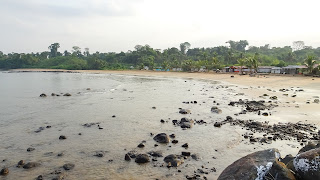
















































































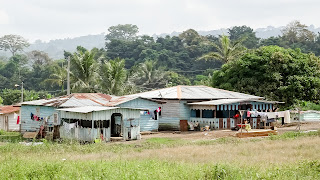























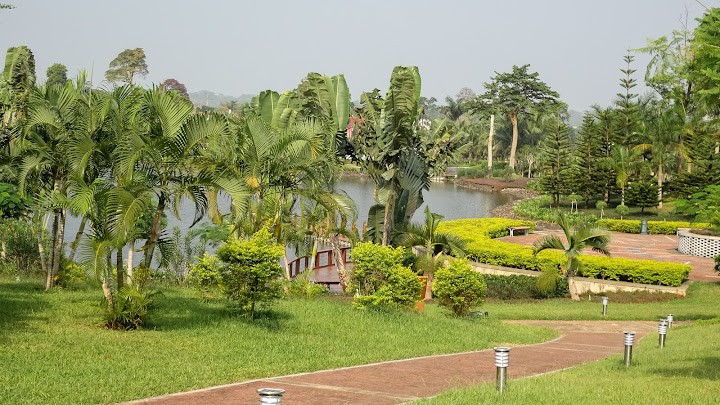






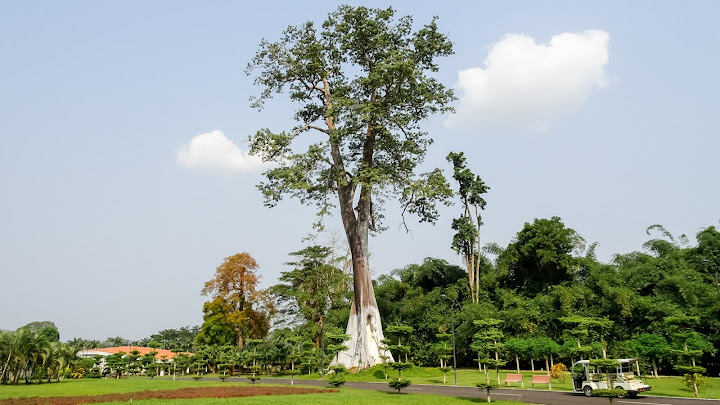




















































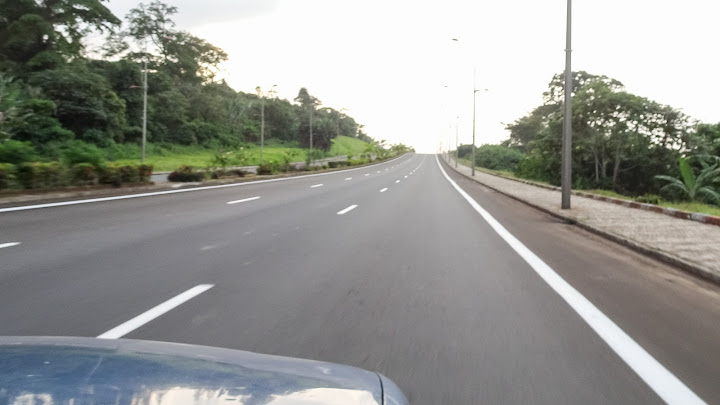









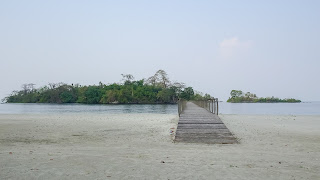



Very interesting experience you've had in Equatorial Guinea. Thanks for posting this.
ReplyDelete